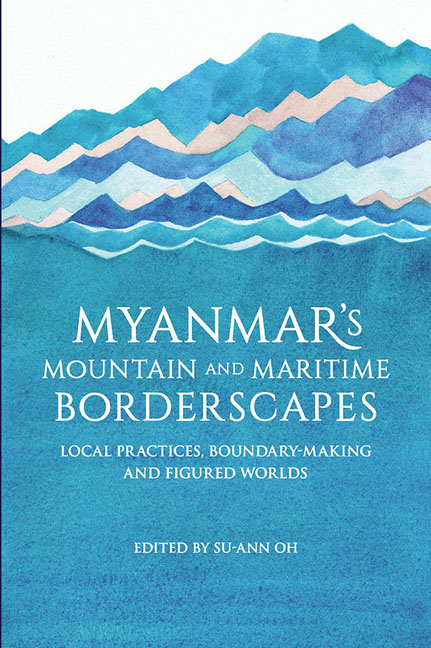Book contents
- Frontmatter
- Contents
- List of Tables
- List of Figures
- Acknowledgements
- Notes on Language, Terminology and Geographical Names
- Contributors
- Abbreviations
- 1 Introduction
- I Overview of Myanmar's Mountain and Maritime Borderscapes
- II Territorial Claims and Imagined Boundaries
- III Social Organization and Border Economies
- IV Mobile Practices and Moving Borders
- V Identity Construction and the Politics of Belonging
- VI Institutionalized Identity and Border Practices
- 15 The Chin State-Mizoram Border: Institutionalized Xenophobia for State Control
- 16 Tăi Buddhist Practices on the China-Myanmar Border
- Index
15 - The Chin State-Mizoram Border: Institutionalized Xenophobia for State Control
from VI - Institutionalized Identity and Border Practices
Published online by Cambridge University Press: 06 June 2017
- Frontmatter
- Contents
- List of Tables
- List of Figures
- Acknowledgements
- Notes on Language, Terminology and Geographical Names
- Contributors
- Abbreviations
- 1 Introduction
- I Overview of Myanmar's Mountain and Maritime Borderscapes
- II Territorial Claims and Imagined Boundaries
- III Social Organization and Border Economies
- IV Mobile Practices and Moving Borders
- V Identity Construction and the Politics of Belonging
- VI Institutionalized Identity and Border Practices
- 15 The Chin State-Mizoram Border: Institutionalized Xenophobia for State Control
- 16 Tăi Buddhist Practices on the China-Myanmar Border
- Index
Summary
In Mizoram State of India, a popular weekly television programme, Lamtluang (Mizo Lyric Blog 2014), reports on different cultures, lifestyles, religious institutions, transport systems as well as other facets of daily life abroad. In 2013, journalists from the programme travelled to the Chin State of Myanmar. In an interview of Chin elders, the topic that arose was the close ethnic relations between the Chin and the Mizo (interview with Chin elders at Aizawl 2014). The elders maintained that while Chin State was part of another country, they were not different from the Mizo in any significant way. They explained that the Chin and the Mizo shared a culture and language and that in many cases, even had kin living across the border. Although the border was drawn during the colonial period, the people have always considered themselves, “wrongly divided; they are brethren” (comments by Mizo Elders during the Lamtluang television programme, 12 February 2014 at Aizawl). This was not a new concept. Numerous arguments for this shared ethnicity, history and the wrongly imposed division of the Chin and the Mizo can be found in Vumson (1986, p. 32) and Son (2013, p. 56). In fact, most Chin and Mizo accept that they are the “same people”, yet, the television show emphasized that the Chin are from a “different” country. Chin interviewees did not accept this position and further commented on how badly most Chin are treated by their Mizo “brothers” when they cross the border from Myanmar to escape poverty in search of a better livelihood in the Indian state of Mizoram.
INTRODUCTION
In addressing the border separating the Chin Hills of Myanmar from Mizoram of India, this chapter has two aims. It is a study of border exchanges: illegal and legal, licit and illicit, and the dire situation of the Chin in Mizoram. We argue that the intense xenophobia against the Chin is not only fostered but also institutionalized by the Youth Mizo Association (YMA), the largest civil society organization in Mizoram. The social science term, xenophobia was chosen due to the obvious marginalization of the Chin in Mizoram (as well as toward other non-Mizo).
- Type
- Chapter
- Information
- Myanmar's Mountain and Maritime BorderscapesLocal Practices, Boundary-Making and Figured Worlds, pp. 353 - 368Publisher: ISEAS–Yusof Ishak InstitutePrint publication year: 2016

